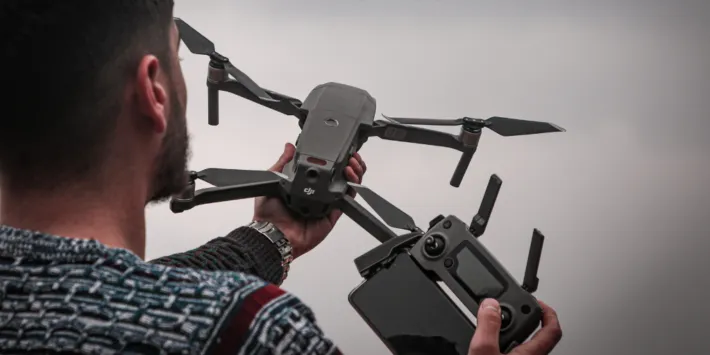Do you own a drone weighing 250 grams or more? If so, you’re required to register it with Transport Canada before taking flight.
Big changes are coming to the Canadian drone industry.
Transport Canada has officially released TP15530E on March 26th. The most exciting news? As of November 4, 2025, pilots holding a Level 1 Complex RPAS Certification will be authorized to conduct Beyond Visual Line of Sight (BVLOS) operations.
That’s right — routine, low-risk BVLOS flights are becoming a reality in Canada.
When Do the New Drone Rules Take Effect?
Transport Canada is rolling out the new RPAS regulations in two phases — giving drone pilots and operators time to prepare and get certified without interrupting the busy flying season.
Here’s what you need to know:
You can’t fly Beyond Visual Line of Sight (BVLOS), Extended Visual Line of Sight (EVLOS), or Sheltered Operations until November 4, 2025.
That’s when the new rules officially kick in for these advanced types of missions.
But you can start getting certified now!
You’ll be able to:
-
Write the Level 1 Complex exam
-
Apply for an RPAS Operator Certificate (RPOC) through Transport Canada’s Drone Management Portal
Flying BVLOS before November?
You’ll still need to go the traditional route and apply for a Special Flight Operations Certificate (SFOC).
So, what are the big changes in TP15530E?
We’ve gone through the long (and pretty complex) document and picked out the key — and most exciting — updates you need to know. Lets dive in!
Expanded Capabilities for Advanced Operations RPAS Pilots
As of November 4th 2025, Advanced RPAS pilots are receiving new capabilities!
If you currently hold an Advanced Operations Pilot Certificate, you won’t need to reapply or complete any additional testing. However, it’s crucial to familiarize yourself with the updated rules and keep your certificate current to fully take advantage of the new capabilities!
-
EVLOS (Extended Visual Line of Sight)
Starting November 4th, RPAS pilots with an Advanced Operations Certification will be able to conduct Extended Visual Line of Sight (EVLOS) operations. This allows for short-range flights with smaller drones, where the drone is flown beyond the pilot’s unaided eye range — meaning the pilot can no longer see the drone clearly with just their natural vision, but they still maintain full control over it.
To conduct EVLOS, you must:
-
Fly and remain within uncontrolled airspace
-
Maintain a distance of at least 30 metres (100 feet) away from people not involved in the operation
-
Have a trained Visual Observer (VO) with an RPA pilot certificate assist you during the flight
-
Operate the drone within 2 nautical miles (3.6 km) of you, the VO, and the Control Station
-
Sheltered Operations
Sheltered operations allow drone operators to fly near buildings or other structures without direct Visual Line of Sight or relying on a visual observer. This new flexibility is useful for building inspections and construction, where operating near structures is common. This will come into effect on November 4th, 2025.
To conduct sheltered operations, you must fly the drone:
-
More than 30 metres (100 feet) away from people not involved in the operation
-
No greater than 30 metres (100 feet) above the structure
-
Less than 61 metres (200 feet) horizontally from the structure
-
Medium Drones within VLOS (Visual Line of Sight)
Starting November 4th, any operation involving a medium drone will be classified as an advanced operation or higher. Medium drones are drones that fall within the weight range of 25 kg to 150 kg.
With the required safety assurance declarations, you can fly medium drones:
-
Over bystanders, within 30 meters (100 feet) horizontally
-
Between 30 meters (100 feet) and 152.4 meters (500 feet) of bystanders horizontally
NEW Level 1 Complex RPAS Certification
Transport Canada has introduced a new Level 1 Complex RPAS Certification, aimed at enabling lower-risk BVLOS (Beyond Visual Line of Sight) operations without the need for a Special Flight Operations Certificate (SFOC). To conduct any Level 1 Complex operation, pilots must complete the appropriate certification process and adhere to all regulatory requirements.
To obtain the Level 1 Complex Certification, you must:
-
Be at least 18 years old
-
Pass the Advanced Online Exam and Level 1 Complex Operations Online Exam
-
Complete at least 20 hours of ground school and successfully pass a flight review
All individuals, companies, and organizations must have an RPAS Operator Certificate (RPOC) to conduct any BVLOS operations. Businesses must have policies and procedures outlined that will accurately reflect the size and complexity of the operations that will be ensued.
Where Can You Fly BVLOS?
As a lower-risk BVLOS operator, you must fly under the following conditions:
-
Remain in uncontrolled airspace
-
Stay below 122m (400 ft)
-
Stay away from airports and aerodromes
A small drone is a drone that weighs between 250g – 25kg. If you are operating a small or medium drone, you can operate at least 1 km away from any crowded areas. If you are only operating a small drone, you can operate over a sparsely populated area or less than 1 km away from a crowded area.
RPAS WILCO Software
Additionally, the Level 1 Complex RPAS Certification requires that pilots and organizations have knowledge and use of flight planning software and aeronautical data. RPAS WILCO is perfect for your upcoming Level 1 Complex operations as they are the only authorized distributor of NAV CANADA aeronautical data for RPAS operations (check it out here).
RPAS WILCO is designed for individuals, businesses and organizations to be compliant in their drone operations, with features such as:
-
Automated Site Surveys – All the information for your RPAS missions, in one place!
-
Access to Exclusive Aeronautical Charts (CFS, VFR, METAR) – Easy to access at any time.
-
Pre-Flight Checklists – Design your own RPAS procedure to take with you on the go.
-
Interactive Airspace Map – Know if you are in an uncontrolled airspace to remain Transport Canada compliant.
For more information, visit RPAS WILCO here: RPAS WILCO
New SFOC Categories & Fees
Starting November 4, 2025, a fee will be required for anyone applying for an SFOC-RPAS, with the exception of government organizations engaged in emergency response. In addition, as of April 1, 2025, an SFOC will be required to fly microdrones (drones weighing less than 250 grams) at advertised events.
Transport Canada has introduced four categories for SFOC-RPAS, these categories are as follows, along with their associated fees:
Very Low Complexity Operations – $20
-
Foreign pilots or operators (non-Canadian citizens or permanent residents) flying for recreational purposes.
Low Complexity Operations – $75
-
Flying at an advertised event (this includes microdrones.)
Medium Complexity Operations – $900
-
Operating drones weighing more than 150 kg.
-
Foreign pilots or operators flying for hire or providing commercial air services.
-
Flying above 122 meters (400 feet).
-
Operating more than 5 drones within Visual Line of Sight (VLOS) or more than 1 drone Beyond Visual Line of Sight (BVLOS).
High Complexity Operations – $2,000
-
Flying BVLOS (Beyond Visual Line of Sight), excluding sheltered operations, Extended VLOS (EVLOS), and lower-risk BVLOS operations under the new Level 1 Complex certification.
-
Flying drones equipped with specific payloads—such as explosive materials, weapons, or other hazardous items—as outlined in CAR 901.43(1).
-
Operating BVLOS in an aerodrome environment.
-
Flying medium-sized drones within VLOS or BVLOS in challenging weather conditions.
-
Flying with a person on board.
-
Any other operation considered high complexity as determined by Transport Canada.
New Terms You’ll Want to Remember
-
Beyond Visual Line of Sight (BVLOS): Operations where the pilot cannot see the drone with the naked eye during flight.
-
Extended Visual Line of Sight (EVLOS): Operations where the pilot maintains control of the drone beyond direct and unaided sight, typically with the support of a visual observer.
-
Sheltered Operations: Flights carried out in controlled areas near buildings or structures, where maintaining direct Visual Line of Sight or using a visual observer may not always be possible.
-
Level 1 Complex Certificate: A certification that qualifies operators to perform specific types of complex operations, including certain BVLOS flights.
-
RPAS Operator Certificate (RPOC): A certificate for operators that allows them to legally conduct advanced or complex drone operations under the new regulatory framework.
-
Populated Area: An area where more than five people live per square kilometer.
-
Sparsely Populated Area: An area where there are more than five, but no more than 25 people per square kilometer.
-
Visual Observer (VO): A trained crew member who helps the pilot by ensuring the flight remains safe.
-
Advertised Event: Any outdoor event that’s publicly promoted, such as a festival, concert, market, or sporting event.
-
Medium Drone: A drone that weighs between 25 kg and 150 kg.
-
Small Drone: A drone that weighs between 250 g and 25 kg.
How to Stay Compliant with the New Regulations
Big changes are coming on November 4th, 2025 — especially for RPAS pilots preparing to fly BVLOS missions under a Level 1 Complex Certification.
To meet the new standards, Transport Canada’s TP15530E outlines stricter flight planning and safety requirements — including the use of verified flight planning software and validated aeronautical data.
It might sound overwhelming—but that’s exactly why RPAS Wilco exists.
Our platform is built to help you meet these new requirements effortlessly and stay fully compliant.
With RPAS Wilco, you’ll get:
✅ Access to certified NAV CANADA aeronautical data (RPAS Wilco is the only drone app certified to distribute this data — see the official list here: list of distributors)
✅ Interactive airspace maps to plan and visualize your flight path
✅ Automated site surveys completed in under a minute
✅ Real-time METAR/TAF weather data for confident decision-making
✅ Pre & post flight checklists to streamline your operations
Built to meet the new standards, our platform gives you certified NAV CANADA data, automated site surveys, and integrated compliance tools—so you can focus on flying, not paperwork.
Stay compliant and confidently unlock BVLOS operations.
👉 Get started today for FREE at rpaswilco.com





